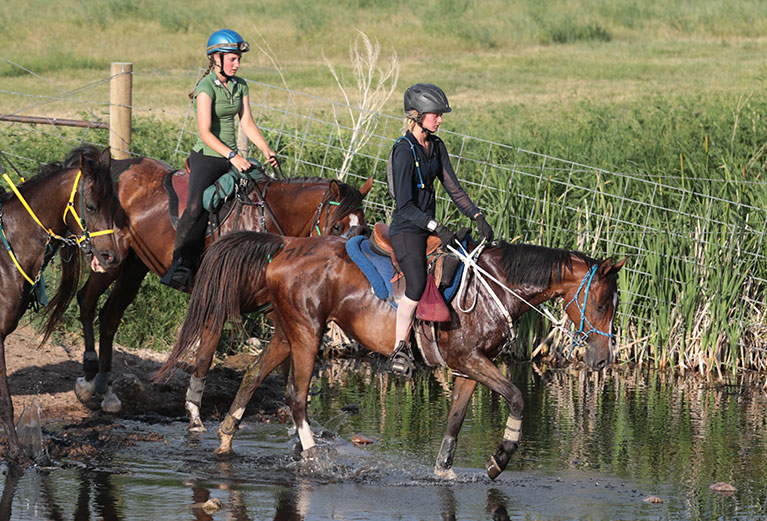 PlatinumPerformance.com - Full Article
PlatinumPerformance.com - Full Article
Going the Distance
Endurance riding is very popular and continues to gain the interest of horse enthusiasts throughout the world. The discipline began in the United States in 1955 when Wendell Robie, an avid California horseman joined by a group of friends set out to disprove the notion that no modern-day horse could cover the rugged trail from Lake Tahoe to Auburn in a single day. Now called the Tevis Cup Ride, this 100-mile California feat winds along much of the historic Western States Trail from the Lake Tahoe area through the Sierra Nevada mountain range to the finish line in Auburn, located a half-hour northeast of Sacramento. In 1982, the Fédération Equestre Internationale, or FEI, the international governing body of equestrian sport, recognized endurance racing as an international sport. Despite its U.S. roots, the discipline has evolved into a very competitive sport worldwide — particularly in Europe, the United Arab Emirates, Australia and New Zealand. Any horse is welcome to compete, but the Arabian breed has dominated the sport since its inception due to their incredible natural stamina and durability.
The American Endurance Ride Conference (AERC) is the governing body for long-distance riding in the U.S. and offers over 700 races annually throughout North America for riders of all ages and ambitions, including shorter 25-mile courses. Most competitive endurance rides are 50, 75 or 100 miles long with different maximum times allowed depending on mileage length. Championship races are 100 miles completed in one day. There are also endurance rides that cover longer 150-mile trails over multiple days. Race courses can be set, such as the Tevis Cup, with horse and rider combinations traveling from one location to another, or more commonly in championship settings, courses have set “loops” that are completed several times in a race. The terrain is often undulating requiring uphill and downhill maneuvering over different types of footing and even through water crossings. Horses are checked before, during and after the race — known as “holds” — by qualified judges and veterinarians verifying that each animal is “fit to continue” both physically and metabolically. Historically, the sport required long distances at relatively low speeds but is now trending toward faster racing speeds. Today, some top-placing elite endurance horses average upwards of 12 to even 15 miles per hour — the equivalent of a medium canter — over 100-mile international tracks. The increase in pace over huge distances poses several challenges for the contemporary endurance horse, and feeding this elite equine athlete has become critically important and a significant focal point for competitive endurance riders.
About the Sport
Most competitive endurance rides are 50, 75 or 100 miles long. Championship races are 100 miles completed in one day. The terrain is often undulating requiring uphill and downhill maneuvering over different types of footing and even through water crossings.
Feeding for Endurance
Endurance is one of the most demanding disciplines of equestrian sport, and some of the nutritional nuances for these horses are unique compared to other equine athletes. With the daunting fitness work required one thing is very important — fuel. The type and amount of feed needed must meet the high-energy demands of endurance conditioning, training and on race days. Conversely, unsuitable or inadequate nutrition will significantly limit the horse’s athleticism. The most common causes for poor performance or fatigue seen during endurance riding is the depletion of energy reserves, dehydration and electrolyte imbalances, or a combination of these issues.
The Arabian breed reigns supreme in the sport of endurance and most long-distance performance horses are either full Arabian or have Arab genetic influence. While this breed is often categorized as a metabolically easy-keeping type, during endurance training, it can often be difficult to supply enough calories to meet athletic output resulting in a horse with a thin body condition. Knowing the individual horse and assessing body condition throughout training is something that endurance trainers and riders closely monitor to ensure a horse is fit and at an appropriate weight. Nutrition tailored to the individual horse will allow him to compete to the best of his ability...
Read more at:
https://www.platinumperformance.com/articles/endurance-horse-riding.html

No comments:
Post a Comment